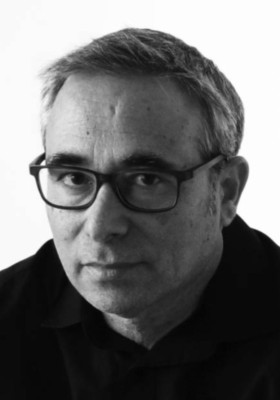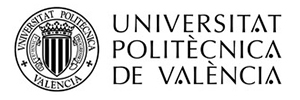


English

Español

Italiano
KEYNOTE SPEAKERS
10th November 2016
Aula Magna of the Università degli Studi di Firenze
Piazza San Marco, 4, Firenze
| 10.30 | |
La torre de la Illeta en la defensa de la costa de Alicante, España. Estudio histórico y evolución constructiva |
|
 |
Pablo Rodriguez-Navarro |
| Universitat Politécnica de Valencia, Valencia, Spain | |
Abstract - The Illeta Tower is located near El Campello city (Alicante) on a small plain, a few meters from the sea, between the Clot de l' Illot located on the south side of the tower, and Almadrava beach located on its northern part. Its location seems to coincide with the position occupied by an ancient medieval tower, now disappeared that had the function of protecting the settlement in the Illeta dels Banyets, today connected to the coast by an artificial isthmus with an important archaeological site, which was occupied on the Iberian period and later with the Roman presence. The Illeta Tower, like many other coastal towers, was built during the reign of Felipe II, as part of the defense system of watchtowers of the eastern coast of the XVI and XVII centuries. Built between 1554 and 1557, it consists of large format blocks in his first three rows and in the rest ashlars. It has a circular floor and piramidal form, highlighting the rest of watchtowers for its dimensions and geometric characteristics. Consists of a single room covered by a dome, which is currently accessed by a metal staircase built in the intervention in 1991. Also from this period are the brackets and breastplate as a garland tops its walls limiting its cover, element that contrasts sharply with Acuña claims and the images earlier than its restoration. Through the historical study, the morphological analysis, the interpretation of its constructive system and by reading the walls, we will do the study of the tower, determining its transformations, and approaching through graphical analysis to knowledge of the original tower.Pablo Rodríguez-Navarro (Valencia 1963) is Professor of the Department of Architectural Graphic Expression of the Polytechnic University of Valencia (Spain) (UPV) since 1994. It was at this University where obtains the title of Technical Architect. Below he graduated in Art History at the University of Valencia, completed his training obtaining the Building Engineering degree from the University of Castilla-La Mancha (Spain). He’s visit profesor at the Politecnico di Milano and at the Università degli Studi di Firenze. He developed his research at the Institute of Heritage Restoration of the UPV. Ph.D. in “Architectural Graphic Expression” in the UPV, with a rating of Excellent Cum Laude and Extraordinary Award. He won the International Research Award Ibn al-Abbar in 2010. He is specialized in digital survey, using laser scanner technologies, photogrammetric survey, UAV's, image post processing and 3D computer graphic. Interested in fortified architecture, has been leading several research projects on earthen architecture in Morocco. Actually leads the national research project about the watchtowers of the Valencian coast (XVI to XVIII centurie) TOVIVA Project. Present in the scientific committees of prestigious conferences and journals, as Disegnarecon, VSMM, Digital Heritage, Digital Applications in Archaeology and Cultural Heritage, CIATTI, Arqueologica 2.0, FORTMED,…
|
|
| 11.10 | |
Torri e fortezze del Mediterraneo nella cartografia nautica della Marina militare francese (seconda metà XVII - metà XVIII secolo) |
|
 |
Anna Guarducci |
Università degli Studi di Siena
|
|
Abstract - This work comes from an accurate research in the archives of Paris. It aims to underline the importance of Mediterranean Marine Atlases realized by the “hydrograph engineers” of French Navy since 1679. These atlases (especially handmade) are very different from traditional small scale nautical maps of medieval and modern age. French atlases characterize themselves as original and exact surveys, made always from the sea; they were characterized by drawings and maps about specific subjects, like: harbors and coves, fortified cities and single towers (overall, perspective or plan views). Among all, the first “Portolano-Map of Mediterranean Sea” stands out: six handmade atlases drown by the engineers Nicolas Pène and Jacques Pétré in 1679-1686, on clear information from minister Colbert and from the king Louis XIV himself. At the time France was at war against Spain, England and Netherlands and she needed the most exact maps of “Mediterranean theatre”; therefore, these atlases are real geo-political and military instruments.Anna Guarducci has been a professor of Geography in the Historic Sciences and Cultural Heritage Department at the University of Siena since 2005, where she is teaching since 1999. In 2002, she received her Doctorate in “Geographical Research, historical and landscape-territorial organization”, with a thesis titled “The Tuscan Thermal System from the Medieval to the Present. Historical Geography and Cultural Heritage”. In the context of her scientific research activity, performed regularly from 1993 to the present, she participated in numerous meetings, conventions and conferences at national and international levels, almost always as a speaker. As a result of her scientific activity, over 90 of her studies have been published in specialized magazines and books, like: “Atlante della Toscana tirrenica. Cartografia, paesaggi, architetture” (Livorno, Debatte, 2012) and “Torri e fortezze della Toscana tirrenica. Storia e beni culturali” (Livorno, Debatte, 2014). The most part of these studies are dedicated to the problems of the landscape, environment and territorial organisations (expecially about Tuscany), and to the census taking and analysis of cartography in the XV-XIX centuries. She is the project manager of the researches and web applications: “Imago Tusciae. Catalogo digitale della cartografia storica della Toscana” (www.imagotusciae.it) and Toscana Tirrenica (www.toscanatirrenica.it). |
|
| 11.50 | |
La trasformazione veneziana di Ravenna: la Rocca Brancaleone (1457-1470) sulla chiesa di S. Andrea dei Goti (518) |
|
 |
Alessandro Camiz |
| Girne American University, Cyprus | |
Abstract - Perhaps for the effects of the damnatio memoriae that followed the Agnellian censorship of Arian churches, Ravenna completely forgot the Church of the Goths; yet numerous documents allow us to locate its remains. It was a massive circular building with a central plan created on the ruins of a Roman building, as described by the Chronicle. The Arian bishop Unimundus built the church out of town in the XXIV year of Theodoric’s reign (A.D. 518). According to another source, Theodoric himself built the church near the Tremedula gate and the church of S. Stefano de Oliviis. The church was rededicated to St. Eusebius after being converted to the Catholic cult. The title reported by Agnellus, in our opinion, refers to the Catholic rededication, as well as the Arian Cathedral of Pavia, also rededicated to St. Eusebius. Near the church in the IX cent. a monastery dedicated to St. Andrew was built. The building itself is described as Ecclesia Gothica in another part of the Chronicle within the architectures that Theodoric built during his reign and cited in numerous other medieval notarial documents as ecclesia gothica. In the fifteenth century during the construction of the Rocca Brancaleone, the defensive system of the city incorporated the building, turning it into a dungeon. This architecture is a singular example of continuity of use from the first century to contemporary times, its original function of thermal conditioner, possibly part of a Roman thermal plant, was maintained, so as to retain the title of the ice tower (torre della ghiacciaia), in spite of a total cancellation of the collective and historical memory of its existence. All consulted authors, needless here to repeat the entire list, but already the Rossi referred to the church as demolished, report the building as demolished for the construction of the fortress, which cannot find any documental or material confirmation. The architect dismantled the stone cladding and used it for the foundations of the fort, but preserved the core wall. It is an exceptional material document, perhaps the only Gothic building in Ravenna not having suffered heavy nineteenth-century restorations and preserved to this day thanks to the new Venetian use.Alessandro Camiz, Ph.D. (1965, Rome–Italy), Architect, is Head of Interior Architecture Department (English), Asst. Prof. Dr. at the Faculty of Architecture, Design and Fine Arts, and Director of the International Centre for Heritage Studies, Girne American University, Cyprus. Research director of the Association for Historical Dialogue and Research (AHDR), and founding member of the Cyprus Network of Urban Morphology (CyNUM). Expert on the subject at the chair of architectural and urban design (Prof. Giuseppe Strappa, “Sapienza” University of Rome ) and Adjunct Professor at the School of architecture, University of Miami. Has collaborated with Sartogo Architetti Associati in several projects such as the New Chancery of the Italian Embassy in Washington D.C. (1993-2001), New Urban and University integrated settlement, Bologna-Lazzaretto (with R. Meyer, 2000), Cheung Kong research group headquarters, Hong Kong (2001), Church ad parish complex S. Volto di Gesù, Rome (1998-2006), Roma interrotta-Uneternal City, XI Architecture Biennale, Venice (2008). Is member since 2003 of History of cities (founded by Enrico Guidoni), since 2007 of the International Seminar on Urban Form and since 2014 of ICOMOS Italy. His main interests are urban morphology, architectural and typological theories, medieval and modern history, the connection between archaeology and contemporary architectural design. Editorial Board member of the Girne American University Journal of Social and Applied Science and of Phlogiston, Journal of the History of Science, Museum of Science and Technology, Belgrade. Has attended Post-Doctoral studies at the Department of Architecture of "Sapienza", University of Rome, holds a Ph.D. in History of Cities from "Sapienza", University of Rome and a Master of Science in Architecture from "Sapienza", University of Rome, Italy. Has published books and articles on “Urban morphology”, “Il tesoro delle città”, “Storia dell`urbanistica”, “Schifanoia, a cura dell`Istituto di studi rinascimentali di Ferrara”.
|
|
| search engine by freefind |
|
|
|
|||







